Period of American Modernism
For much of the 20th century, American art followed two distinct, often overlapping courses: abstraction and realism. New artistic ideas from Europe on perspective, color and subject were increasingly influencing many artists. These experimental artists simplified and exaggerated their increasingly personalized interpretations of the natural world to different degrees, creating works that intellectually and emotionally engaged their viewers in bold new ways. By mid-century, a few painters began creating works that featured their hand gestures at the expense of recognizable subject matter. This gave rise to the first truly original American style of art, known as abstract expressionism. Alternatively, many artists maintained that realism, not abstraction, defined their views into the American scene. The dominant realist painters of Delaware and beyond often borrowed from the loose brushwork, emotional colors, and spatial distortion of abstraction.

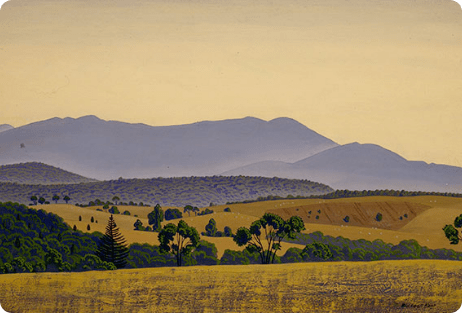
Although Rockwell Kent studied with leading American impressionist William Merritt Chase (1849–1916) and leading American realist Robert Henri (1865–1929), the artist’s modern artistic departure simplified the objects in his landscapes into geometric shapes. Kent’s modernist aesthetic composed these abstracted forms into overlapping layers of flattened vignettes. These vignettes expressed his transcendental spiritual belief that glorified humanity’s place within the vastness of nature.
LANDSCAPE
ROCKWELL KENT (1882–1971)
POST-1920
OIL ON PANEL
GIFT OF SEWELL C. BIGGS; 1996.9

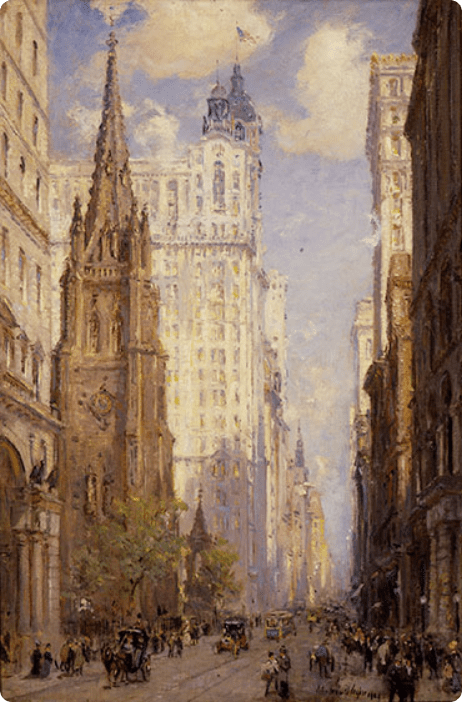
Colin Cooper was born in Philadelphia where he trained at the Pennsylvania Academy of the Fine Arts before studying at the Académie Julian in Paris. Cooper gained great popularity for using impressionism to glorify modern architecture, recording the turn-of-the-century invention of skyscrapers and their visual impact on American cities.
BROADWAY
COLIN CAMPBELL COOPER (1856-1937)
1909
OIL ON CANVAS
SEWELL C. BIGGS BEQUEST; 2004.402


Born in Norway, Jonas Lie grew up in Paris and moved to New Jersey, where he lived while studying at the Art Students League and National Academy of Design. He was elected a full member of the National Academy in 1925 and soon became its president. Although Lie worked in the impressionist style, he used bright, expressive colors, a loose brush stroke that visually simplified his subjects into basic shapes, and featured urban realist subjects of the working classes.
HILLSIDE SARANAC
JONAS LIE (1880–1940)
1924
OIL ON CANVAS
GIFT OF SEWELL C. BIGGS; 1996.11
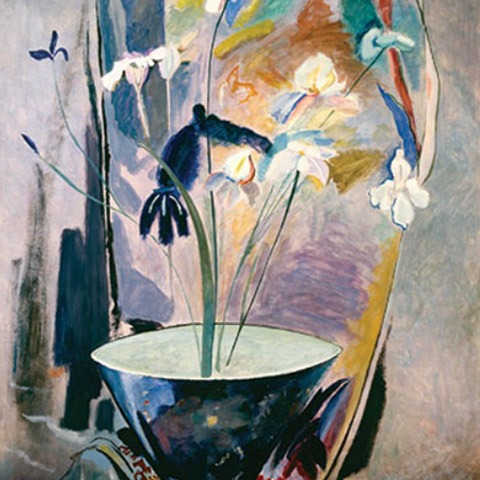
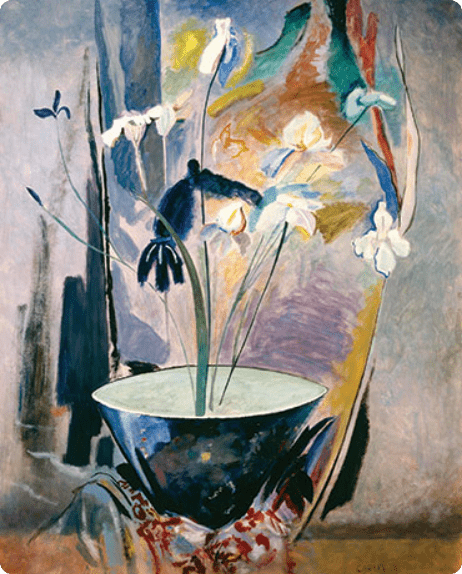
Arthur Carles studied painting at the Pennsylvania Academy of the Fine Arts. From 1907 to 1910 he painted in France. Impressed by fauvist painters such as Henri Mattise (1869–1954), Carles became a leading modernist painter in Philadelphia. Carles exhibited his work at the infamous gallery known as 291, which was Alfred Stieglitz’s showcase for modern artists of Europe and America. Carles also exhibited his work in The Armory Show of 1913. He is primarily remembered for his abstract still-life and figure studies.
STILL LIFE WITH IRIS IN A BOWL
ATTRIBUTED TO ARTHUR BEECHER CARLES
(1882–1952)
CA. 1927
GOUACHE AND WATERCOLOR ON PAPER
GIFT OF SEWELL C. BIGGS; 1996.6
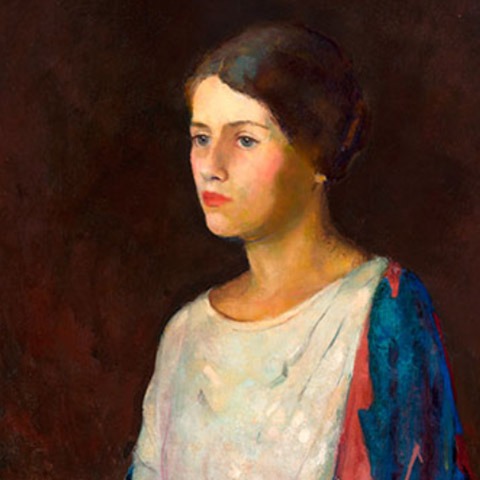

Henryette Whiteside studied art at the Pennsylvania Academy of the Fine Arts with Thomas Anshutz (1851–1912), William Merritt Chase (1849–1916), and Cecelia Beaux (1855–1942), as well as with Charles W. Hawthorne (1872–1930) in Rhode Island. The sitter depicted in this portrait is the daughter of another of Whiteside’s instructors, William Sergeant Kendall (1869-1938). Whiteside exhibited at the Pennsylvania Academy, the National Academy of Design, and the Art Institute of Chicago. An important advocate for art education in Delaware, she founded the Wilmington Academy of Art in 1928, which merged with the newly founded Delaware Art Center (now the Delaware Art Museum) in 1938.
PORTRAIT OF ALISON KENDALL
HENRYETTE STADELMAN WHITESIDE (1891–1973)
1925
OIL ON CANVAS
MUSEUM PURCHASE; 2005.447
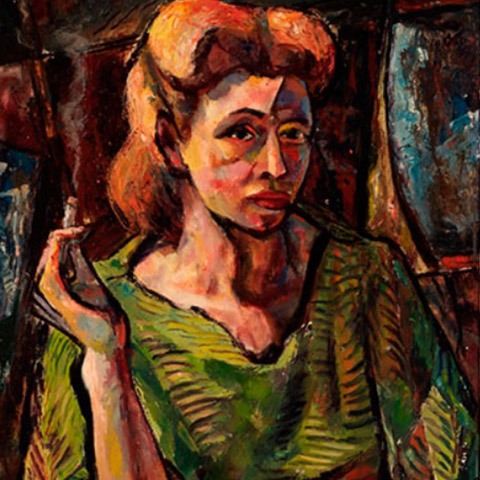

Born in Wilmington, Delaware, Edward Loper learned to paint in the Delaware Division of the Works Progress Administration during the Great Depression, and in 1937, was the first African-American artist to exhibit in the Wilmington Society of Fine Arts. The artist found initial commercial success with his own modernist perspective that displayed the influences of Realism, Post-Impressionism, and Cubism. Loper later studied aesthetics at the Barnes Foundation, and his work began to display the influence of Henri Matisse’s (1869–1954) fauvist use of color. His work was featured at international exhibits, and several regional collectors purchased his work. All the while, Loper taught private painting classes that featured his signature rhythmic use of dissonant patterns of color.
PORTRAIT OF MAE MAFCO
EDWARD LOPER (1916–2011)
CA. 1940
OIL ON CANVAS
MUSEUM PURCHASE; 2007.4
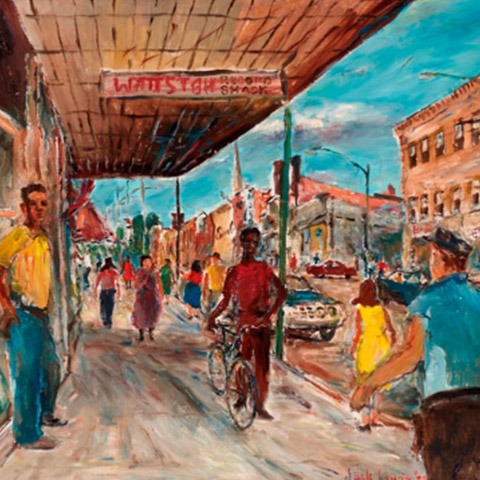
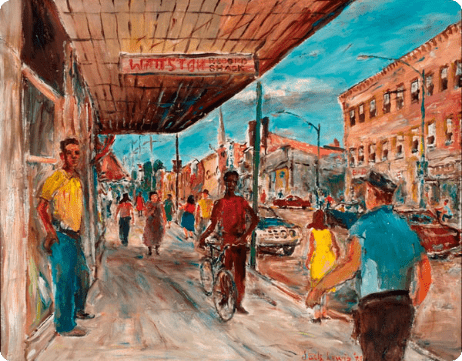
Jack Lewis was originally from Baltimore but moved to Delaware during the Depression to document the activities of the Civilian Conservation Corps. He developed a signature abstract style, which distinguished the architectural studies, cityscapes, portraits, and landscapes that he painted throughout the Delmarva Peninsula for the next sixty years. Having continued his studies at Rutgers University, Lewis taught painting classes at the Rehoboth Art League, in Bridgeville, and at the Dover Air Force Base, all in Delaware. He also published seven books on his regional watercolor studies, including Pacific Odyssey, The Hudson River, and The Chesapeake Bay Scene.
WATT STAX RECORD SHACK
JOHN IOWA LEWIS (1913–2012)
1973
OIL ON CANVAS
GIFT OF THE BAKER FAMILY; 2008.5.18


Born in New York, Howard Schroeder trained as a commercial artist at the National Academy of Design. After serving in World War II, having been stationed at Lewes, Delaware, Schroeder and his wife opened the iconic art-supply store, The Art Age, which fueled the growing artist colony surrounding the Rehoboth Art League. Schroeder spent most of the rest of his life teaching art within small classes and private schools across the state.
LEWES
HOWARD SCHROEDER (1910–1995)
1968
OIL ON CANVAS
GIFT OF GERALD A. AND MARION H. LYNCH; 2001.3
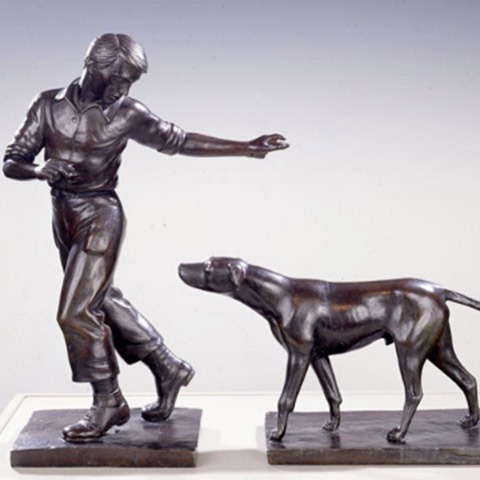
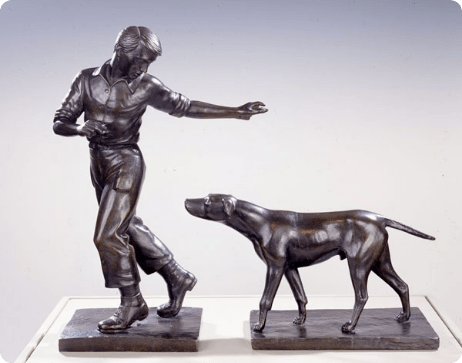
Paul Manship, a Minnesota native, studied art in New York and Philadelphia, but discovered his modern interpretation of classical art while studying in Rome. Boy with Dog was part of a larger composition proposed for the pediment of the U.S. Capitol Building in Washington, D.C.
BOY WITH DOG FROM PIONEERS OF THE WEST
PAUL MANSHIP (1885–1966)
1961
BRONZE
SEWELL C. BIGGS BEQUEST; 2004.490
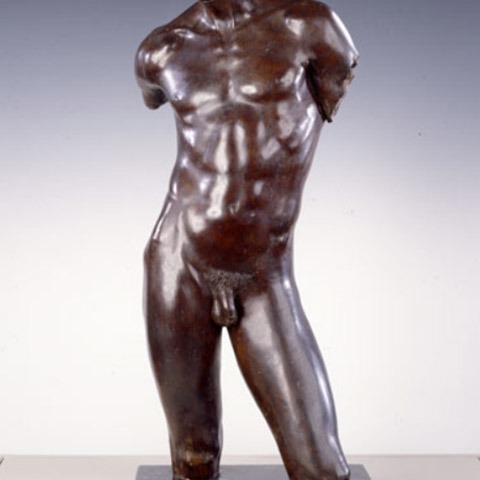

Born in Virginia, Charles Park relocated to Philadelphia and Wilmington after World War II to study art at the Pennsylvania Academy of the Fine Arts and the University of Delaware. For many years, he cast his own figural sculptures, and claimed that Male Torso was one of his finest examples. Parks taught at the Delaware Art Museum and the University of Delaware, receiving the Watrous Gold Medal and the Meiselman Prize for Classical Sculpture of the National Sculpture Society.
MALE TORSO
CHARLES PARKS (1922–2012)
CA. 1970
BRONZE
SEWELL C. BIGGS BEQUEST; 2004.493
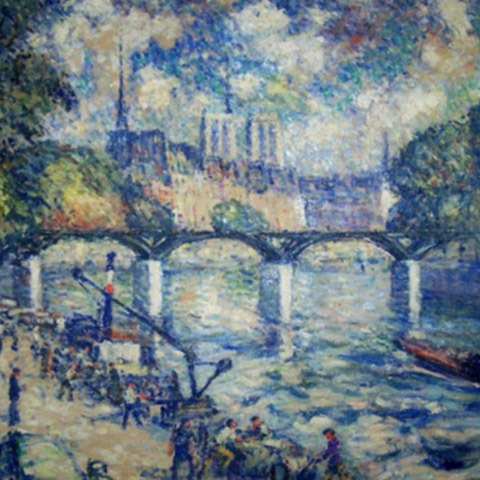
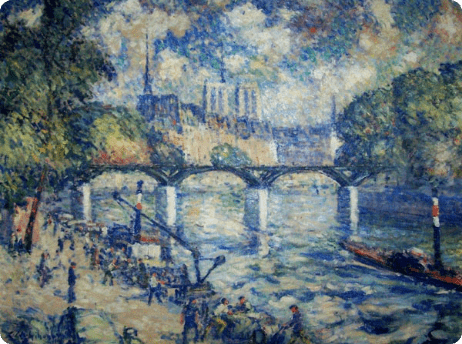
Clarence Montfort Gihon worked in the Post-Impressionist style. He was born in Philadelphia and trained in New York. Gihon moved to Paris to study and stayed for 35 years. He regularly showed works at the Pennsylvania Academy, the Art Institute of Chicago, the Panama Pacific Exhibition, and the Salon of the Société Nationale des Beaux Arts in Paris. Most notably, Gihon studied under William Merritt Chase and Kenyon C. Cox in New York. This work reflects the time Gihon spent in France and is one of a series of paintings in which Gihon depicted the famous Seine River in Paris.
FOR FURTHER THINKING: On the Biggs Timeline, we feature a work by William Merritt Chase, who was an instructor of Gihon. Find this work on the Timeline and look closely at it in relation to this work by Gihon. What are some similarities and differences between the respective works of the teacher and the pupil?
THE SEINE
CLARENCE MONTFORT GIHON (1871-1929)
C. 1923
OIL ON CANVAS
MUSEUM PURCHASE
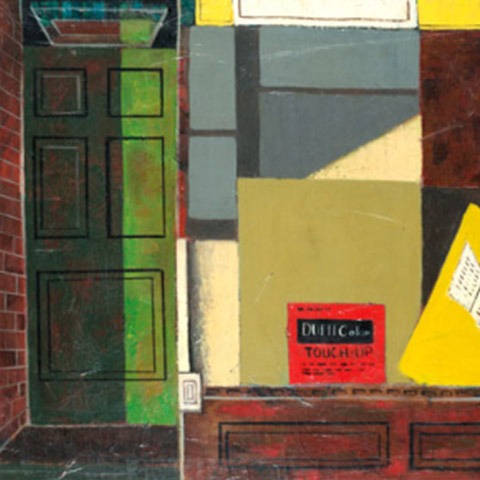

Ruth Egri Holden studied and worked as a painter, muralist and art instructor throughout the country, but eventually settled in Wilmington, Delaware. She worked within the modernists modes of Cubism and Dynamic Symmetry and having her work in the collection offers the Biggs the opportunity to emphasize the historical significance of modernist styles to Delaware’s artistic heritage.
FOR FURTHER THINKING: Although modernists like Holden focused primarily on colors, form, and shape, many visitors have very emotional reactions to this work.
What personal response does this work stir up for you?
Does it feel hopeful, dismayed, comforting, or unsettling?

